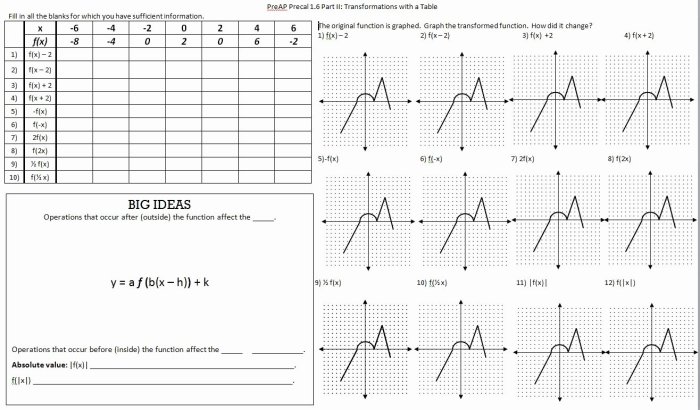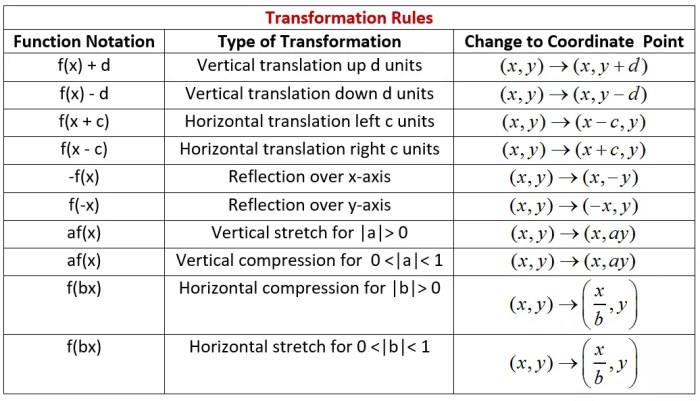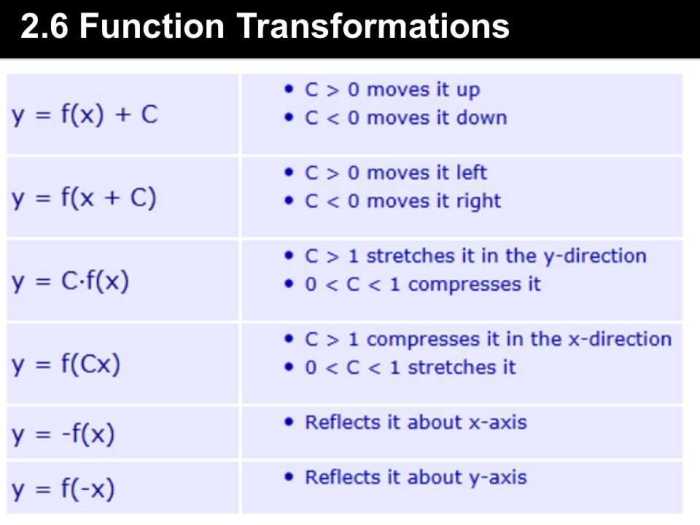Transformations of Functions Mystery Code Activity Answer Key provides a comprehensive guide to the enigmatic world of function transformations, unlocking the secrets of how functions can be manipulated to create new and fascinating curves. This guide unravels the complexities of transformations, empowering students with the knowledge and skills to decipher the hidden messages within function graphs.
Delving into the intricacies of parent functions and their transformations, this guide illuminates the concepts of translations, reflections, dilations, and rotations. Through engaging examples and detailed explanations, it reveals how these transformations impact the graph of a function, altering its key features and behavior.
Transformations of Functions

Transformations of functions involve modifying the graph of a function by shifting, reflecting, stretching, or shrinking it. This allows us to create new functions with different properties while maintaining the essential characteristics of the original function.Understanding transformations is crucial in mathematics, as they enable us to analyze functions, solve equations, and model real-world phenomena.
Analyzing Transformations: Transformations Of Functions Mystery Code Activity Answer Key

Transformations can significantly alter the graph of a function. Translations shift the graph horizontally or vertically, reflections flip it over an axis, dilations change its size, and rotations turn it around a fixed point.These transformations affect key features of the function, such as its intercepts, vertex, and asymptotes.
By analyzing the transformed graph, we can identify the specific transformations that have been applied.
Applying Transformations
Transformations can be applied to functions algebraically using specific rules. For example, translating a function up by 2 units involves adding 2 to the function’s output.Creating a table or diagram can help visualize the transformations and their effects on the function’s graph.
Transformations are often used to solve real-world problems, such as adjusting a model to fit experimental data or optimizing a function for a specific purpose.
Mystery Code Activity

The Mystery Code Activity is a fun and engaging way to practice identifying and applying transformations. Students are given a code that represents a transformed function, and they must use their knowledge of transformations to decode the code.A table or diagram can help students systematically decode the mystery code.
The activity reinforces the concepts of transformations and provides a hands-on approach to learning.
Answer Key

The Answer Key provides the solutions to the Mystery Code Activity. It explains the reasoning behind each transformation and highlights the importance of understanding transformations in solving the mystery code.The Answer Key also reinforces the concepts of transformations and provides a clear understanding of how they can be applied to solve problems.
FAQ Explained
What are the different types of function transformations?
There are four main types of function transformations: translations, reflections, dilations, and rotations.
How do transformations affect the graph of a function?
Transformations can affect the graph of a function by shifting it up, down, left, right, stretching or shrinking it, or rotating it.
How can transformations be used to solve real-world problems?
Transformations can be used to model a variety of real-world phenomena, such as the motion of a projectile or the growth of a population.